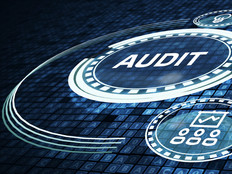Asset Management Tools Help Governments Optimize IT Investments
Taking Control
Economics drive organizations to use technology in inventive ways to increase operating efficiencies and reduce expenses. Although there are many obvious benefits to deploying systems that automate processes and improve collaboration, the immediate result often is a complex and unwieldy IT environment. Even small municipalities can be overwhelmed by the diversity of their hardware and software resources.
To take control of these assets and manage them throughout their lifecycle, organizations of all types and sizes are ramping up their investment in IT asset management (ITAM) solutions.
State and local governments traditionally have relied on ITAM primarily to track hardware inventory and monitor licensing agreements. But many systems support every phase of the lifecycle -- from planning and procurement through deployment and maintenance (including license management, usage monitoring, software distribution and automated patch management) and finally, end-of-life retirement. Some even offer financial management capabilities that simplify procurement, regulatory compliance and vendor contract negotiation activities.
"Asset lifecycle management has really taken over," confirms Lisa Erickson-Harris, research director at Enterprise Management Associates. Today, she says, organizations are looking for more from their ITAM products than just inventory management, instead seeking out solutions that can consolidate all monitoring and management functions throughout an IT asset's lifecycle.
Capital Gains
Cost concerns propel many state and local government offices to explore ITAM solutions. Without them, Erickson-Harris says, assets are managed in departmental silos, compromising their overall usefulness to the larger organization. Only by managing these resources more holistically can agencies take full advantage of what they have.
This is easier said than done, of course, particularly in sprawling state and local governments where supported end-user devices can easily number in the tens of thousands. The District of Columbia Office of the Chief Technology Officer (OCTO) falls squarely in this camp, overseeing 30,000 end-user systems running in more than 100 individual agencies.
Given this reality, OCTO staff needed to find an effective way to streamline and centralize inventory tracking, software distribution and patch management. They found it in LANDesk Software's LANDesk Management Suite, which combines inventory, power, system and server management tools in a single interface.
Patch management proved to be one of the system's most notable early benefits. When a broad-based computer virus struck two city departments, OCTO team members were empowered to respond quickly, using LANDesk to issue an immediate patch update to hundreds of systems. What previously would have taken weeks to complete was resolved in a matter of days.
Chum Chancharadeth, an IT specialist with OCTO's ServUs PC support unit, says the system has provided some excellent functionality. He worries, however, that many government agencies don't take full advantage of some of ITAM's best features.
"There's so much you can do to achieve savings, if you set it up correctly," Chancharadeth says of the asset management system. For example, he says, a department could customize the product to spot when it has more site licenses than it needs for a particular piece of software.
Effective IT asset management practices can drive down total cost of ownership for IT resources by 15% or more. The biggest reductions come from procurement (160%), disposal (60%) and operations (44%).
SOURCE: Gartner
Strategic Thinking
Some governments opt to use multiple tools, rather than a single product suite, to perform discrete functions. In either case, it's crucial to take a very deliberate approach to choosing a solution.
Erickson-Harris says any organization looking to mount a successful IT asset management strategy must be mindful of the bottom line. "Financial metrics around IT asset management really are the first step," she says.
Government agencies "need to consider all the processes across the entire IT lifecycle -- from deployment to decommissioning for desktops and laptops -- when choosing an ITAM solution," says Bob Fries, an information technology manager for the City of Carlsbad in California. He says the city, which has been using Novell ZENworks for inventory management and software distribution, recently dealt with a depreciation-related challenge as it extended the life span of its workstations by one more year.
But thanks to ZENworks, the city had a robust and accurate accounting of its entire 1,000-workstation inventory, which made the conversion a far more efficient exercise. Fries says managing these assets across their lifecycle was central to the conversion's success and will help with other processes.
"Looking across the entire lifecycle helps to maximize the use of each computer throughout its life span," he adds.
Aim High
A comprehensive and well-executed IT asset management program should support many objectives throughout a resource's lifecycle, including:
- acquiring the most beneficial IT assets at the lowest possible price;
- maximizing value throughout its term of use;
- optimizing performance;
- disposing of an asset when it's no longer cost-effective to maintain;
- complying with vendor requirements or other governance issues.






